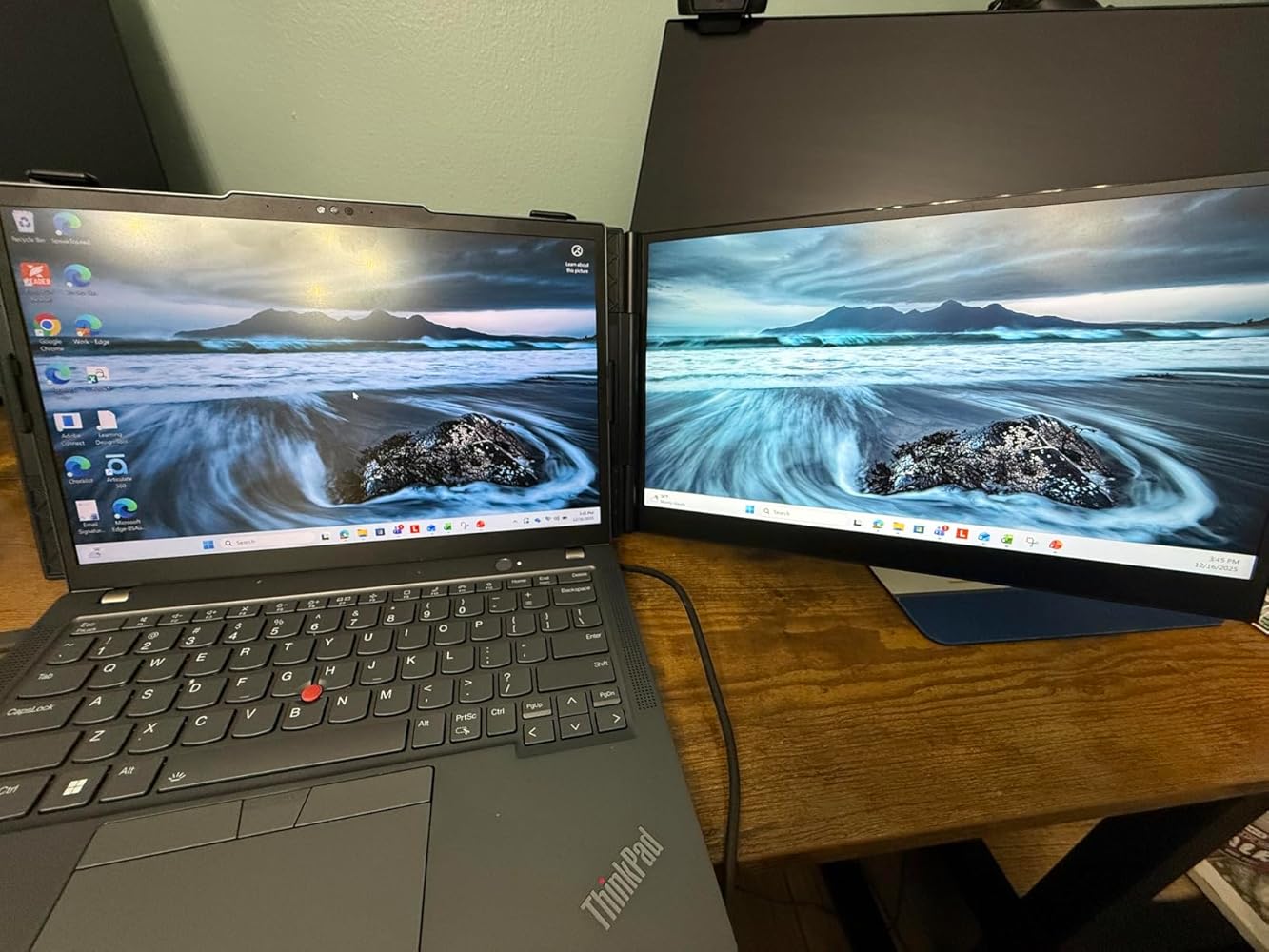Stacked Monitors: Pros, Cons, and the Best Vertical Monitor Setup in 2025
In today's multitasking digital world, screen real estate is everything. While side-by-side monitor setups are popular, stacked monitors—where one screen is placed above another—are rapidly gaining traction for their space-saving design, ergonomic potential, and multitasking power. Whether you're a developer, video editor, streamer, or remote worker, this configuration can dramatically enhance productivity and comfort. This article breaks down the benefits, challenges, and best practices of stacked monitor setups—and helps you decide if it's the right fit for your workflow.
Part 1: What Are Stacked Monitors and How Do They Work?
Stacked monitors refer to vertically arranged displays—one on top of the other—mounted using dual-arm monitor stands or stacked desktop risers.
This vertical configuration maximizes vertical workspace without expanding horizontally, making it a smart choice for tight desks, standing workstations, or minimalist setups.
Popular Use Cases:
-
Developers: Top monitor for documentation, bottom for code.
-
Gamers/Streamers: Game on bottom screen, chat/stats on top.
-
Editors/Designers: Timeline editing below, preview above.
-
Analysts: Dashboards below, spreadsheets or reports above.
Part 2: Key Benefits of Using Stacked Monitors
|
Advantage |
Explanation |
|
Maximized Desk Space |
Vertical layout frees up horizontal real estate, ideal for compact workspaces. |
|
Enhanced Multitasking |
Keep apps in clear view—no constant tab switching. |
|
Improved Focus |
Centralized visual field reduces distractions and boosts concentration. |
|
Ergonomic Potential |
When correctly positioned, this setup minimizes neck and eye strain. |
|
Aesthetic Appeal |
Clean, modern look—especially with matching bezel displays. |
✅ Tip: Make the bottom monitor your primary work screen (aligned at eye level) and place reference content on the top display.
Part 3: Stacked vs. Side-by-Side Monitors
|
Feature |
Stacked Monitors |
Side-by-Side Monitors |
|
Desk Footprint |
Compact vertical use |
Wider horizontal setup |
|
Viewing Comfort |
Less side-to-side movement |
Less neck tilt upward/downward |
|
Multitasking Flow |
Split view vertically |
Split view horizontally |
|
Ideal For |
Deep reading, reference work |
Wide-format tasks like video timelines |
Part 4: Ergonomics and Viewing Angles
To avoid discomfort:
-
Set the bottom monitor at eye level (primary workspace).
-
Tilt the upper monitor downward slightly to reduce neck strain.
-
Avoid using a tall upper monitor that forces your head back.
-
Use anti-glare film if your lighting reflects off the top screen.
If properly set up, stacked monitors can reduce more fatigue than side-by-side arrangements.
Part 5: Best Use Scenarios for Stacked Monitors
Ideal for:
- Developers juggling code + preview
- Traders monitoring multiple dashboards
- Designers referencing brand guides while creating
- Gamers keeping Discord/OBS/chat visible above
- Students attending virtual classes on one screen and taking notes on another
Part 6: Required Equipment for Vertical Stacking
|
Accessory |
Purpose |
|
Dual-arm monitor mount |
Key to secure and flexible placement |
|
VESA-compatible monitors |
Allows proper mounting (e.g. Cevaton N2/N3/T2) |
|
Cable management tools |
Prevent dangling wires |
|
Desk risers or wall mounts |
Alternative if arms aren't an option |
🔧 Ensure both monitors are under the mount’s weight limit and compatible in size.
Part 7: Real-World Feedback from Users
“My coding workflow doubled in efficiency. Code stays in front, references live above.”
“Streaming is seamless now—chat and stats on top, gameplay uninterrupted below.”
“Initially awkward, but once height-adjusted, it’s a game-changer.”
Part 8: Common Pitfalls and How to Avoid Them
- ❌ Mixing monitor sizes: Leads to misalignment.
- ❌ Ignoring neck ergonomics: Upper monitor too high = pain.
- ❌ Using mounts without cable routing: Leads to visual clutter.
- ❌ Mismatched color settings: Causes eye strain.
Part 9: Who Should Choose a Stacked Monitor Setup?
✅ Choose stacked if:
- You're limited on horizontal space
- You focus on documents, code, or video timelines
- You work long hours and want ergonomic relief
🚫 Skip if:
- You constantly share your screen with others
- Your monitors lack VESA compatibility
- You can’t adjust monitor height properly
Conclusion: Is Vertical the New Horizontal?
Stacked monitors offer a smart, space-saving, and visually efficient solution for modern workstations. From focused coding to immersive streaming setups, the benefits are tangible—as long as ergonomics are prioritized. Whether you’re building a compact home office or enhancing your studio, stacked displays may be the key to a streamlined and stylish workflow.
Recommended Cevaton Products for Stacked Monitor Setups
|
Model |
Key Feature |
Use Position |
Buy Now |
|
Cevaton T2 |
QHD 2K resolution, 16.1” |
Top or Bottom |
|
|
Cevaton N2 |
15.6” Full HD, productivity focus |
Bottom (primary) |
|
|
Cevaton N3 |
Ultra-light, portable |
Top (secondary) |
FAQ: Stacked Monitors
Q: Are stacked monitors better than side-by-side?
A: It depends on your workspace and task type. Stacked is better for vertical workflows and small desks.
Q: Can I stack monitors of different sizes?
A: Yes, but it's recommended to use similar sizes to avoid ergonomic misalignment.
Q: Do stacked monitors require special equipment?
A: Yes, you’ll need a dual-arm or vertical VESA-compatible stand.
Q: Can I use portable monitors in a stacked setup?
A: Absolutely. Lightweight models like the Cevaton N3 are ideal for upper placement.
Sources:

